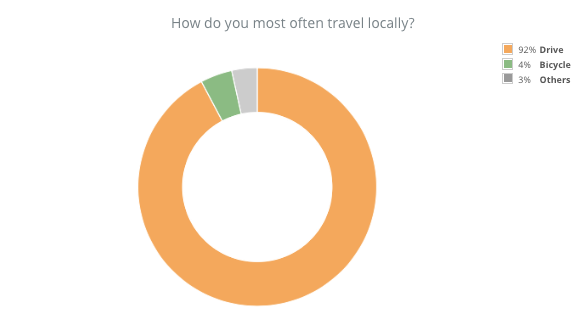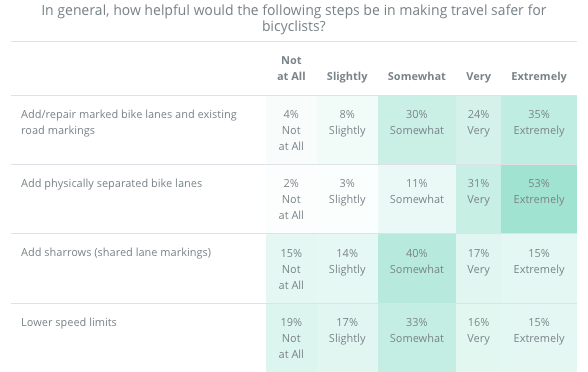Lowering barriers to participation increases community engagement—but where to start?
Reaching beyond the usual voices is the first step in an integrated approach to community engagement. But even organizations who can reach a broad set of residents with in-person tactics and virtual (e.g. survey websites, email, online townhalls) can still face challenges if they aren’t focused on lowering barriers to participation.
What exactly does it mean to “lower the barrier to participation?”
Tearing down walls to participation

Keeping the barrier to participation low starts with a simple principle: our first interaction with a resident should not be a ‘wall’. In practical terms this means:
- No registration wall prior to participating
- No up-front requirement to create a new username or password
It’s important to use community engagement platforms that can do these things when appropriate – but it almost never should be our default starting point.
Providing familiar, easy-to-use interfaces for community engagement

“Giving input is easy!” … if you’re a planning professional.
Lowering barriers also means intentionally asking yourself questions like, “Are we asking residents to learn a new or unfamiliar interface in order to engage?”
Participation should be easy and intuitive, leveraging formats they are already familiar with. While it’s tempting to ‘innovate’ on engagement formats, it’s important to balance that desire with empathy for residents. If our goal is more inclusivity and engaging under-represented voices, simplicity and familiarity are critical.
With a little bit of strategy, these two tactics – eliminating barriers and providing familiar interfaces – can be applied to yield much more participation and more inclusive engagement outcomes.
Key steps to lowering barriers to participation
Provide a mobile-friendly community engagement experience
Being mobile-minded is one of the best ways to increase engagement from all residents, especially underrepresented groups. According to Pew Research, reliance on smartphones for online access “is especially common among younger adults, non-whites and lower-income Americans”. Meanwhile, low-income Americans are actually more likely to own a smartphone compared to the national average. Why? Because while low-income Americans may not be able to afford a monthly Internet bill and a laptop, they can afford installments on a smartphone and a monthly data plan.
Segment residents based on the text keyword or URL by which they reach you
With mobility in mind, formats such as text messaging and mobile-friendly websites can instantly put an engagement opportunity in the palm of someone’s hand. These text-in numbers and URLs can be disseminated in any number of traditional methods (physical signage, mailers, in-person meetings, fliers) or virtual methods (social media, eNewsletters, website, online news articles about upcoming projects). Rather than asking more demographic questions, we can infer a great degree about a person automatically by creating unique text-in codes or URLs.
For example, King County’s transit team creates short URLs and text message keywords specific to bus stops. When a participant texts in or arrives at the custom URL, they arrive at the same content, but are identified with this particular stop. This is stored in their public participation database, where they can later segment responses by route or stop.
Lead with relevant questions


When thinking in terms of survey design—especially the first touch point or initial message—residents are more likely to engage when prompted first with a relevant, simple question. Messaging is also best when it shows the value that public input will have on the decision making process. For example: “Your input will help set priorities for our 2040 Transportation Plan.”
Thinking in terms of both online and offline community engagement outreach, such a question can be used as the headline for a targeted social media ad or postcard, both pointing to the same engagement opportunity. An example of a relevant questions might be: “How can we improve bicycle and pedestrian safety in downtown?” While it may not seem intuitive, this is actually a question that is relevant to any resident who traverses downtown, including those who don’t typically bike or walk. In a recent study we conducted with a transportation planning organization in North Florida, bike and pedestrian safety was a top priority – despite over 92% of participants indicating they commuted solely by car.
Read more: “Engaging Residents Through Relevance” – Webinar Highlights
Leverage existing communities online
Building relationships with community groups on-the-ground is important and impactful, so we should also build similar digital relationships. By cross-referencing existing offline relationships with their Facebook presence (i.e. Facebook Group) you can have a group administrator post a link to your project page or post a link yourself.
Not only can you scale up your efforts by reaching your existing community partner groups online but also find new ones that may only exist online. By creating partnerships with these groups you are able to reach their audiences in a whole new way, meeting them where they are, build on the trust that they have in that organization or group, and parlay that into building trust with yours.
Become multilingual by default
All residents, especially those with Limited English Proficiency, should still be able to provide feedback in their native language to increase equity and inclusion. However, this is often prohibitively labor intensive when creating separate surveys and websites for each additional language. To avoid this, and the costs therein, combining a service like Google Translate with the review of a native-speaking contracted translator or bi-lingual volunteer creates a high-fidelity translation at a fraction of the cost.
Read more: How organizations are increasing equity and inclusivity with social media advertising
Taking a first step towards more inclusive engagement
Whether you currently conduct regular outreach and engagement or are starting from scratch, we’re here to provide resources and direction. Here are some initial steps:
- Schedule a time to walk through the toolkit and discuss your needs
- Our team will share examples and information relevant to your specific situation
- We’ll provide a proposal with initial options for getting better community engagement outcomes



